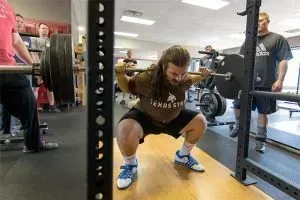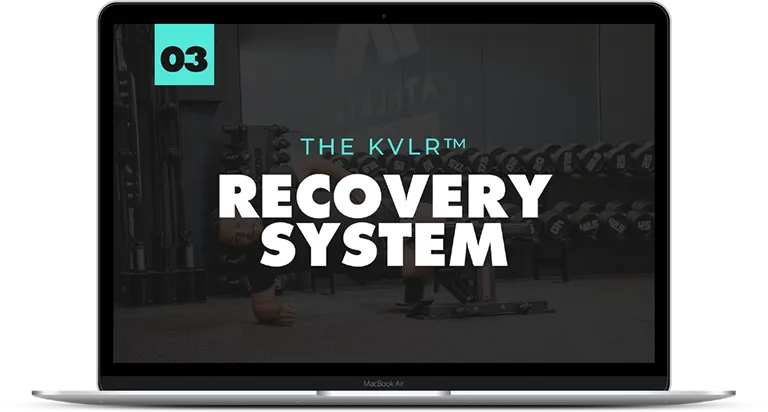Athletes Authority
Latest Blog & Insights

The Utility Of Isometrics In Strength Training Prescription
The Utility Of Isometrics In Strength Training Prescription
We’ve all probably experienced a physical stalemate. Whether that be an arm wrestle or a rugby scrum, despite a lot of effort being applied, there is little to no movement.
This type of physical activity can be broadly referred to as isometric exercise, which involves the muscle exerting tension without producing movement or a change in muscular length. More commonly, it has been referred to as ‘static’ training.
In case you can’t quite picture the concept, here are some examples:
1. Pulling or pushing an immovable object
2. Holding a barbell at a fixed joint angle
Although it would be fair to say that isometric training doesn’t provide the depth of benefit to eccentric or concentric training, there is still some benefits to isometric training which warrant exploration. Unfortunately, isometric training is at best, an afterthought and at worst, completely overlooked.
During the course of this blog, I hope I can present a solid argument to convince you that isometric training should find a way back into your program.
Globally, the intramuscular tension that we call isometric training can be progressed through two variables: resistance, and, acceleration.
Isometrics for Greater Muscle Activation
One of the most important benefits of isometric action training is that it’s the form of contraction that facilitates the greatest muscular activation. By increasing activation, the number of motor units that are used to innervate and contract a muscle cell are increased.
Research by Babault and colleagues (2001) exploring this concept have shown that maximal isometric training on average, recruits approximately 5% more muscle fibres compared to maximal eccentric or concentric actions. This concept is supported by a large body of literature.
By including isometric training in your training, the ability to maximally contract is increased, providing a strong cross-over benefit to more dynamic action. Long term, the increased neural drive (the connection of the motor unit to the muscle) could positively augment potential for strength gains.
One of the biggest problems with beginner lifters is an inability to produce maximal tension during the concentric portion of the lift. Isometric training solves this problem as it bypasses the requisite motor skill to safely execute the movement. This rationale is in contrast to the traditional school of thought which leaves isometric training to advanced, well-trained athletes.
Isometric action training as a stimulus for strength gains
There is a lot of research to support the role of isometric training in strength development. A study published in 2002 by Kanehisa et al found gains to maximal strength between 14-40% over a 10-week intervention period.
However, it’s important to note that the strength gains received from isometric training occur primarily at the joint angles being trained, within a bandwidth of +/- 20 degrees.
Commonly viewed as a drawback, I see it as a benefit for two main reasons:
1. Isometric training allows you to develop maximal force at the specific joint angle your weakest at. Have you ever noticed that your deadlift, bench, or squat fails at a specific part of the repetition? For me, it’s off the floor in a deadlift, just above parallel squatting, and about halfway on bench. That may be the same for you, but it’s more than likely that at least one of those differs. Isometric training allows you to overload that specific joint angle to improve your sticky point. Who wouldn’t want less missed reps?
2. Maximal intramuscular tension can only be applied for a short period of time during dynamic exercise. This time constraint can be extended in isometric training. If maximal tension can be applied for .5-1 second in the concentric phase of a dynamic movement, this could easily be sustained for 3 times that length of time during isometric activity. Because strength is greater influenced by time under tension, adding to the total time your muscles are maximally contracted is likely to positively potentiate your strength gains.
Isometric training stimulates muscle growth
It would be fair to assume that because there is no mechanical work being done, and low neurological requirements, that isometric training wouldn’t elicit significant muscular growth. However, the same research by Kanehisa and colleagues found improvements to muscle cross-sectional-area of 12.4% when performing maximal isometric contraction and 5.3% during submaximal isometric training at 60% 1RM for 10 weeks. I’d recommend that isometric training is included concurrently alongside more conventional lifting methods for the best bang for buck.
Examples of Isometric Training
Maximal Isometrics
Below are common ways to set up isometric training for the three primary lifts. If you don’t have a power rack, then you’ll have to do functional isometrics, which we discuss below.
Bench Press:
Set up your safety bars just above the chest – this is where you’ll start your press from. Choose the height at which you want to perform the isometric at, and set up a second set of pins at that height, as shown in the photo. Press maximally into those pins, then reset at your bottom set of pins.
Squat:
Set up your squat just above parallel. For most people, the sticky point is about 3-5 inches above parallel, set up your second set of pins there. Get under the bar, set up, brace, and drive the bar up into the second set of pins. After the allotted time, lower the bar and rest it on the first set of pins, as shown in the photo.
Deadlift:
You only need to set up one set of pins at the desired height. With a bar loaded with light bumpers, pull hard into the pins, and then reset.
Functional Isometrics
Isometrics don’t need to always be done into pins or safeties. You can also do ‘pause’ exercises, or otherwise known as functional isometrics. You can do this with both heavy loads and light loads, just be sure to contract maximally and move the bar as fast as you can.
This trains the common sticky points that are associated with the major lifts and is also quantifiable because you can gauge the difficulty of the pauses, or, increase the load keeping the duration of the pause the same. It’s a win-win.
Bench Press:
Unrack the bar with a load of approximately 70%. As you begin to press the bar, stop the bar dead 2 inches above the chest, holding the bar motionless for 3-6 seconds, then press the bar. Repeat these 2-3 more times. Then, next set, do the same thing, with the bar stopping dead 4 inches above the chest, and repeat. Do this one more time, resting the bar 6-8 inches above the chest, closer to lockout.
Squat:
Complete as above, but this time stopping the bar dead just above parallel, staying tight and motionless for 3-6 seconds, before completing the rep. Repeat this at different heights for optimal stimulation.
Deadlift:
Pulling from the floor, stop mid-shin for 3-6 seconds, before completing the rep. Next set, pull to just above the knee, before completing the rep. Do 5-8 reps at 60-70% of 1RM.
How to Apply Isometric Training
1. Isometric training can be used as a means to maintain muscle mass and strength gains during periods of lowered training volumes (due to a scheduled de-load or as a result of fatigue etc)
2. The duration of a maximal effort contraction should be anywhere between 3-10 seconds; I personally like 3-6 seconds. It’s important to MAXIMALLY contract your muscles as hard as you can to get the most out of this.
3. Use multiple positions: to take the deadlift for example, you may want to set up a rack so when you pull maximally, you do so for 2-3 sets 1-inch off the floor, then, increase the pins/safety’s and do 2-3 sets just below the knee, and finally, 2-3 sets just before lockout, consisting of one rep each. Alternately, you could just use them at your weakest point to bring that joint angle up.
4. From personal experience, a 1:8 to 1:10 ratio seems to work best for work: rest. That means, if you contract for 3 seconds, you need anywhere between 24-30 seconds rest.
5. Use isometrics concurrently with a dynamic derivative of the exercise, eg: block pulls with mid-shin isometrics.
6. Pioneers of modern strength training Dr Siff and Dr Verkhoshansky have recommended isometrics prior to high-force or high-velocity lifts to potentiate/activate/facilitate/enhance those lifts. I’ve had experience with this protocol as well as a supplement/superset to the primary dynamic lift and like both strategies.
The following table will help you select the proper training parameters when using either heavy or light loads for functional isometrics:

Are you hungry for a competitive edge? Unlock a new level of athleticism Click here to learn more
Our resources

Master your mental game Mini Course
Discover the mindset strategies of the World’s Greatest Athletes so you can turn your mind into a weapon of performance.

THE ATHLETES AUTHORITY RECOVERY SYSTEM
Performance = fitness – fatigue. Reduce your fatigue and recover faster with our 3-step recovery system.
SYDNEY LOCATION
© 2023, Athletes Authority | All Rights Reserved
Website & Marketing Powered By Gymini

